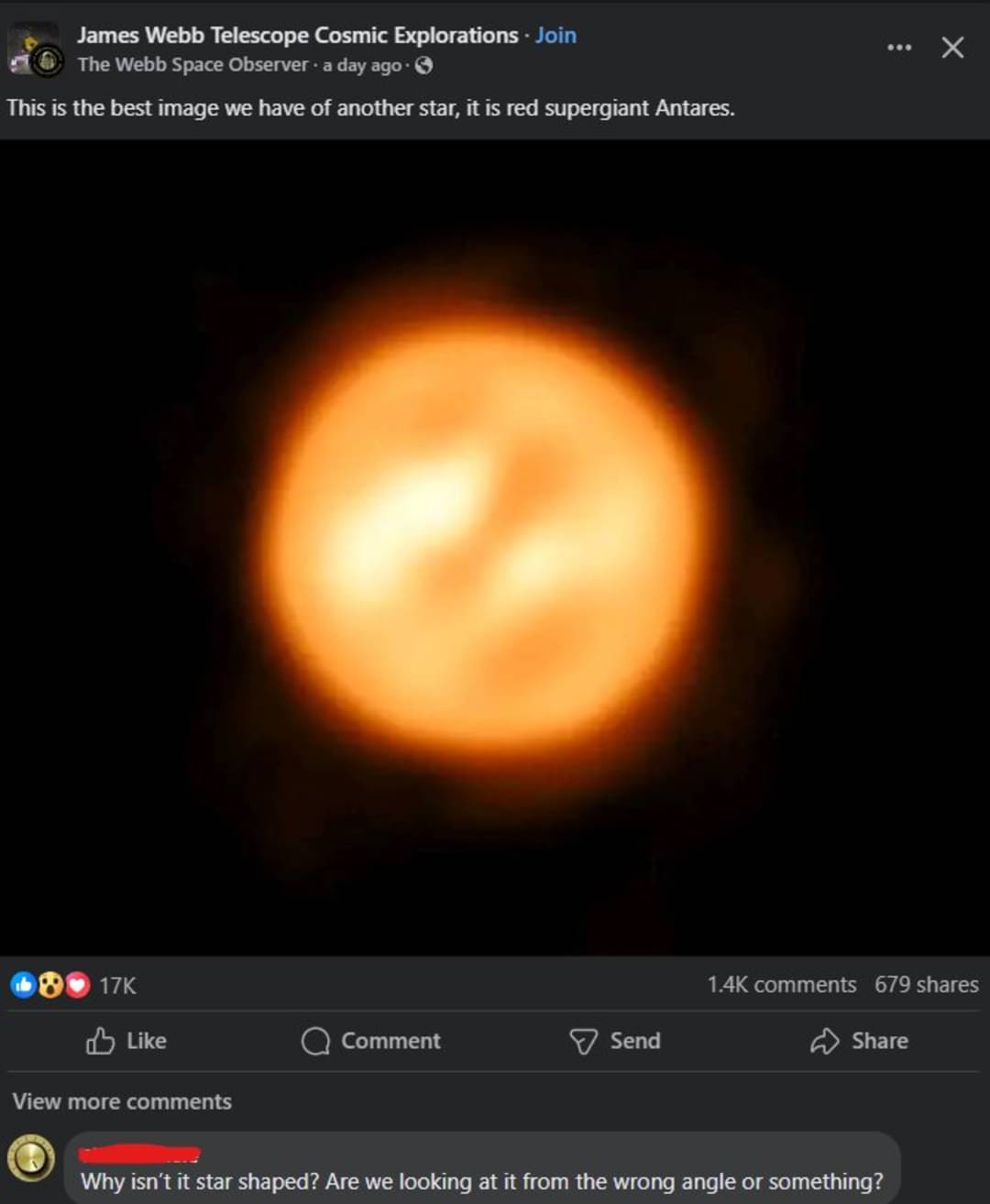this post was submitted on 09 Nov 2024
404 points (98.1% liked)
Science Memes
11819 readers
330 users here now
Welcome to c/science_memes @ Mander.xyz!
A place for majestic STEMLORD peacocking, as well as memes about the realities of working in a lab.

Rules
- Don't throw mud. Behave like an intellectual and remember the human.
- Keep it rooted (on topic).
- No spam.
- Infographics welcome, get schooled.
This is a science community. We use the Dawkins definition of meme.
Research Committee
Other Mander Communities
Science and Research
Biology and Life Sciences
- [email protected]
- [email protected]
- [email protected]
- [email protected]
- [email protected]
- [email protected]
- [email protected]
- [email protected]
- [email protected]
- [email protected]
- [email protected]
- [email protected]
- [email protected]
- [email protected]
- [email protected]
- [email protected]
- [email protected]
- [email protected]
- [email protected]
- [email protected]
- [email protected]
- [email protected]
- [email protected]
- [email protected]
- !reptiles and [email protected]
Physical Sciences
- [email protected]
- [email protected]
- [email protected]
- [email protected]
- [email protected]
- [email protected]
- [email protected]
- [email protected]
- [email protected]
Humanities and Social Sciences
Practical and Applied Sciences
- !exercise-and [email protected]
- [email protected]
- !self [email protected]
- [email protected]
- [email protected]
- [email protected]
Memes
Miscellaneous
founded 2 years ago
MODERATORS
you are viewing a single comment's thread
view the rest of the comments
view the rest of the comments

Honest question: Do people think stars look like the star shape because of diffraction spikes in refractor telescopes? I thought the star shape pre-dated any refractor telescope. And I don't know how many people would have seen refractor images back in the days to make it so culturally engrained?
The post-processing used in astronomical observations is a really interesting topic. I'm following the debate around the black hole images with great interest. I don't know enough about the specifics to have an opinion, but it is very interesting and has overlap with some of the things I do for work.
I’ve always wondered this. For now I’ve settled on the hypothesis that all the first astronomers all had astigmatism.
People have indeed thought this before telescopes. You'll most likely see diffraction patterns around bright lights because of eyelashes and other imperfections, probably different for each eye but the same for all lights (technically, wavelength also matters but not really on this scale).
Thought that is how they look like or represented them as such in art?
My understanding was that most understood them as light sources, very similar to how we do, but rather then cosmic body they saw angels or whatever fits their religious framework.
Its not like people where unaccustomed to the night sky, but maybe deeper psychological interpretation plays a role.
Stars can seem spikey to the naked eye
They look star-shaped because of refraction on the atmosphere and in our eyes. Those telescopes just have way larger relative distortions because they do have larger distortions and can see smaller things.
there are a series of things that can make points of light look spiky: eye defects, eyelashes when squinting, smudgy glasses, etc..